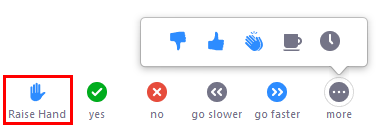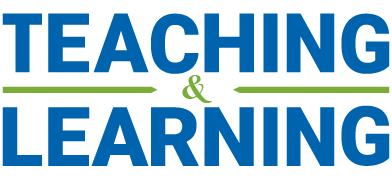By Peter Macdonald, Director of Schulich Centre for Teaching Excellence and the MBA/JD Program
Dear Fellow Faculty Members,
I hope that your Fall term is off to a good start in our evolving remote-teaching environment! During the Summer term, we had the great pleasure of hearing from our esteemed colleagues about best online teaching practices in a series of SCTE webinars related to teaching with Zoom, student engagement, course delivery, and more. I would like to emphatically thank our distinguished presenters for sharing their compelling insights and being so passionately engaged with our faculty audiences.

As our Fall term unfolds, I am reminded of the importance of maintaining an engaging learning environment for our students in this new online context. Several guiding principles come to mind in this regard:
1. Honour the “humanity” in your teaching.
Reach-out to your students on a personal level, by way of:
- interactive classroom introductions at the beginning of your course and in each class thereafter (perhaps, while taking attendance for subsequent classes);
- responding empathetically to technology-related challenges that your students may be experiencing; and
- inviting your students to contact you individually after class about course-related concerns (through “virtual office hours” or otherwise).
Explore additional ways to help create a sense of class community in the online environment. As Ashley and Wissam said so well during the webinar series “Preparing to Teach Online Classes at Schulich in Fall 2020” in August, “communicate, communicate, communicate” and “do the wave” at the end of each class!
2. Prepare for technology issues that may arise.
I recently encountered a novel challenge when trying to post a pre-recorded “lecture introduction” on Canvas. To enable student access to the introduction (which had been recorded to the cloud), I needed to load the recording link (an external URL) in a “new tab” on Canvas. I was unaware of this requirement at the time and solved the problem by posting a large MP4 file late that evening in a cumbersome manner to meet course delivery deadlines (instead of pursuing what normally would have been the more efficient process of posting the recording link). This reminded me of the ongoing need to practice important technological processes well in-advance of the required timelines (even where, in my case, I had successfully posted video recordings on Canvas many times before).
To discover and practice the different ways you can deliver online lectures, both synchronous and asynchronously, review the Canvas Online Course Delivery Guide: Lecture Guides & Examples. In addition, Kate Ellis shares some teaching tips on Pre-recorded PowerPoint and Break-out Rooms in a related webinar.
3. Set course management guidelines and related student expectations clearly at the outset of your course.
Course grading and feedback is as important (if not more important) in an online context than in an in-person environment. Be vigilant in adhering to your prescribed delivery schedules. Post lecture introductions and related asynchronous material on Canvas in timely manner before the relevant class. Manage your synchronous delivery so that you don’t exceed your allotted Zoom classroom time. And return graded asynchronous assignments and other assessments in a timely manner. Again, as said so well by Ashley in August, “lead by example”!
Review the T&L Online Course Design Guide & Checklist and Canvas Online Course Delivery Guide: Communication, Grading, and Feedback Related Resources and Examples for more ideas and examples.
4. Manage student participation in Zoom classes purposefully and effectively.
I teach several large undergraduate classes that involve significant qualitative discussion, where it is difficult to monitor and respond to “chat” input throughout the class. For me, maintaining a detailed, colour-coded excel spreadsheet to record student participation as it occurs during class, while encouraging students to use the “hand-raising” feature in the participant window on Zoom, has been very helpful in achieving balanced student input and creating an engaging learning environment for all involved.


For more ideas on how to inspire and manage online student participation, view the following resources:
- Online Course Design Guide: Student Participation
- Teaching Your First Zoom Class: Preliminary Presentations, First Impressions, Procedural Ground-Rules and Classroom Participation
- Keeping Your Zoom Lecture Lively and Managing Online Student Presentations with Wissam Al-Hussaini
- Canvas Online Course Delivery Guide: Learning Activities & Assessments Guides & Examples
- Webinar Recording on ‘Enhancing Student Engagement’ with Markus Giesler & Wissam Al-Hussani
This is a challenging and exciting time in the evolution of higher education. We have an outstanding, dedicated and very talented group of faculty members at Schulich, and I believe strongly in the value of sharing our individual and collective teaching experiences in this new environment.
Learn More:
- SCTE Webinar Recap, Tips & Takeaways: Preparing to Teach Online Classes in Fall 2020
- SCTE Webinar Recap, Tips & Takeaways: Teaching Successfully with Zoom
- SCTE Webinar Series Recap: Reflections on Remote Teaching (Part I) – Managing Synchronous Online Classes
- SCTE Webinar Series Recap: Reflections on Remote Teaching (Part II) – Online Evaluations & Assessments
- SCTE Webinar Series Recap: Reflections on Remote Teaching (Part III) – Online Course Design & Synchronous vs. Asynchronous Delivery



